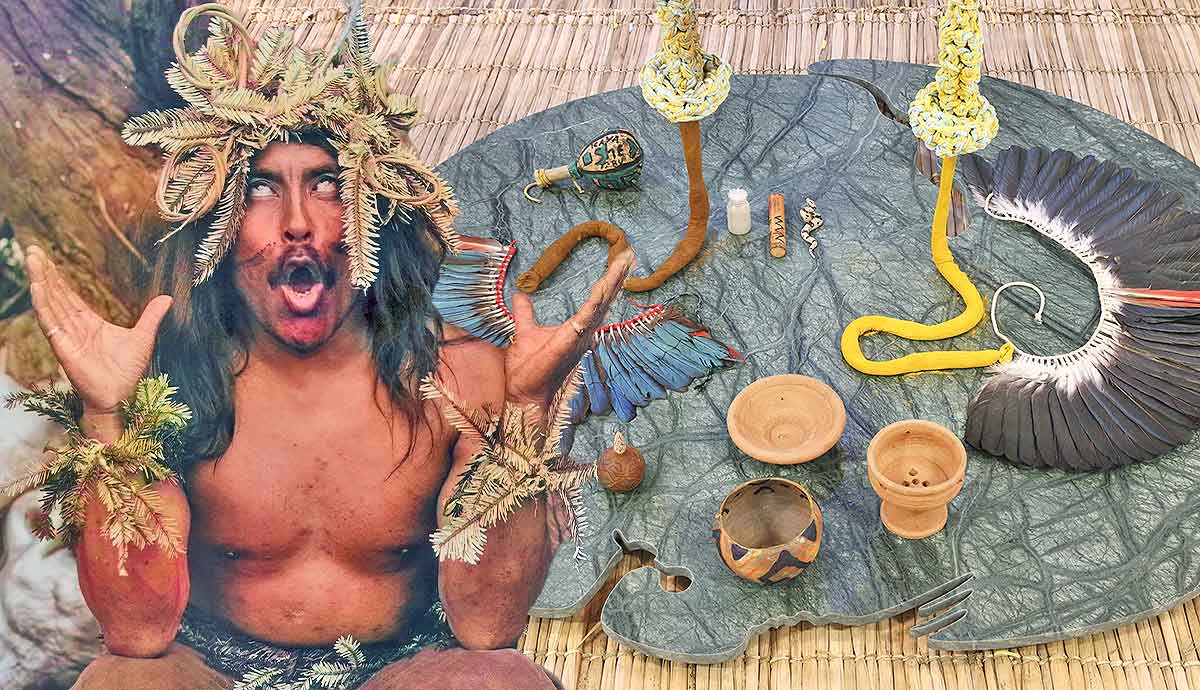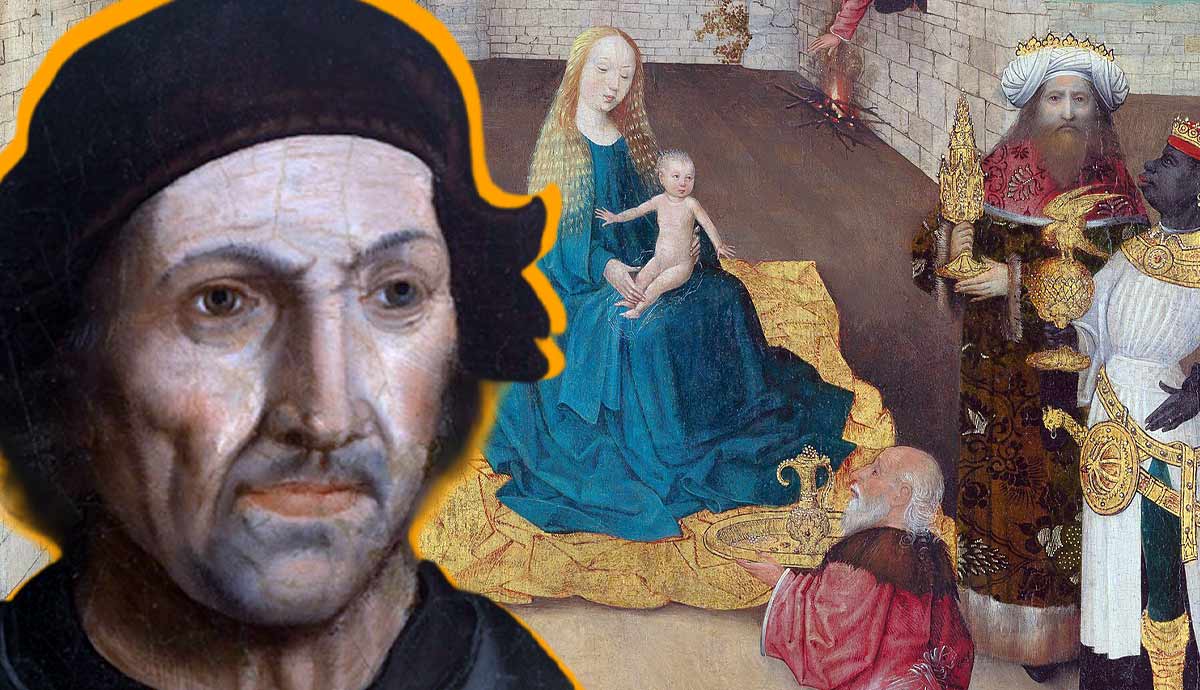
SUMMARY
- Shamanism, an ancient system of beliefs and practices, is prevalent in various cultures across the globe.
- Art has a significant role in shamanistic practices, with many art forms having symbolic and healing purposes. Contemporary artists like Joseph Beuys and Ernesto Neto have drawn from shamanic traditions.
- Indigenous artists provide an authentic perspective on shamanism, emphasizing its communal nature and resisting the homogenization of global culture.
- The resurgence in shamanism and spiritual practices might be a reaction to the uncertainties of the modern world and a collective desire for reconnecting with nature and finding sustainable ways of living.
Shamanism is a system of beliefs and practices that many researchers consider the oldest surviving. This system has barely changed in the history of humanity. Shamanism is not a religion in the present-day sense since various cultures rely on various mythological systems, but a specific type of religious practice. It is surrounded by many myths and misconceptions imposed by Western culture. Still, many artists choose to employ shamanic practice not only as an homage to their ethnic roots but as a specific way of artistic self-expression.
What is Shamanism?

Shamanism as a practice is not limited to a specific region or culture. Although rituals and settings may differ, shamanic practices still exist in Australia, North America, South America, Africa, and Asia. The word shaman is familiar to the Western ear but it is often influenced by pop cultural images. Shamans are not evil magicians but practicing spiritualists and healers, usually deeply respected by their community. According to practitioners’ beliefs, one does not decide if they want to become a shaman as the spirits make their choice before the person in question is even born.
Entering the state of trance, often with the use of psychedelics, a shaman can supposedly communicate with spirits, negotiate with them, and sometimes even fight them. Shaman as a being exists outside the boundaries of the dead and the living, the spiritual and the human. Rebirth and transformation are crucial processes for shamans. Often they are symbolically killed during initiation rituals since this act is supposed to give them the ability to cross the borders between the worlds. Social and gender boundaries also rarely apply to shamans. In many cultures, a shaman is a separate category, not subject to the common characteristics of males and females.
Shamanism and Indigenous Art

Creating art plays an important role in shamanistic practices, yet, contrary to popular belief, the artistic element of it is not limited to performance art. Painting and sculpture are also common. However, a shaman is not creating art for art’s sake. Instead, all of their actions have symbolic and practical meanings. For instance, Navajo sand paintings that are created by a shaman seeping colored sand through their fingers, have a healing purpose, with the design of the composition depending on a particular illness. The sick person then sits on the painting as part of the healing ritual.
In fact, many varieties of shamanic art imply the destruction of the shaman’s work at the end of the ritual. Always made from natural materials like wool, soil, or honey, pieces of indigenous art involved in practices often come back to nature, completing the cycle.
In a way, the myth of a shaman is similar to the Western myth of an artist. Both shamans and artists perform their actions not because they are willing to do it but because they cannot avoid doing it. A shamanic gift can kill its owner when unreleased, just like the suppressed artistic self-expression harms the artist. The concepts of an artist and a shaman share the idea of non-regular humans, capable of seeing, feeling, and expressing more than others. Like a shaman transforming themselves during the ritual, an artist is going through a spiritual catharsis.
Joseph Beuys, the Shaman of Modernism

One of the best-known Western artists who incorporated shamanic practices in his work was the controversial German man named Joseph Beuys. Art historians regard Beuys as the father of performance art and conceptualism but nonetheless admit that his actions and claims need to be re-evaluated. Beuys’ artistic persona was the central element of his art.
Born in 1921, Beuys was old enough to volunteer for the Luftwaffe when World War II unfolded. He was stationed in Crimea, Ukraine in 1942 and conducted attacks as a gunner until his plane crashed in 1944. That was the moment when Beuys artistic biography started. According to the artist, the tribe of Crimean Tatars found him and accepted him as one of their people. These events left a lasting mark on Beuys’ artistic practice. For years after the incident, he dived into shamanic practices and adapted them into his artworks, often using natural materials and ritualistic gestures.
However, it is necessary to state that Beuys’ story was hardly anything more than a product of his imagination. Although the plane crash indeed happened, there were no Crimean Tatars in the area. Despite Beuys’ claims that he was reborn as a new person and left Luftwaffe as soon as he got back to his unit, he actually remained in service until the Third Reich capitulation in May 1945.

Beuys never confessed what made him invent the story so difficult to believe. Apart from a rather understandable act of establishing his artistic persona, Beuys had probably felt the need to rehabilitate himself in the eyes of the public. After the end of World War II, being a German artist was not a crime, but being a Luftwaffe volunteer certainly was. To avoid accusations, Beuys fabricated the narrative of rebirth and redemption, which still did not stop him from maintaining his connections with some Nazi officials who managed to escape Europe.
The central topics of Beuys’ work were transformation, healing, and reconnection with nature. All these processes were necessary to fix the world after two great wars. He planned the world’s rebirth in the same fashion as his own life story, staging performances based on his archetypal mythology. Once, he spent a week in an enclosed room with a coyote, which he regarded as the most indigenous being in America, wrapped in felt blankets, overcoming the hostility of the poor animal.
During another performance, Beuys covered his head in honey and gold leaf and wandered through an art gallery with a dead hare in his arms, whispering the meaning of the exhibited works into the animal’s ear. Hare and honey are known as symbols of resurrection in German culture. The whole performance could be seen as both the lamentation over the natural world, destroyed by humans and replaced with simulacra, and the elaborate ritual of its resurrection, composed of movements, incantations, and sacrifices.
Shamanism and Contemporary Art

Borrowing indigenous spiritual practices isn’t anything new for Western artists. Apart from the not-so-carefully fabricated story of Joseph Beuys, we can recall Jackson Pollock, who had a profound interest in Native American art and shamanistic practices. Pollock’s gesture painting originated from Navajo art, used in healing rituals and ceremonies.
Only a limited number of artists inspired by shamanism directly present themselves as shamans. Still, their interest in rituals and shamanic practices illustrates a larger trend towards deeper spiritual involvement and reconsidering our relationships with society and nature.
Brazilian contemporary artist Ernesto Neto closely collaborates with the Huni Kuin people, an indigenous group living in Brazil and Peru. Neto didn’t just adopt the shamanic practices of the Huni Kuin, he also invited its representatives to join his artistic projects. Neto’s installations often incorporate smells, textures, and space manipulation to immerse the viewers completely, helping them reach a trance-like state.
Shamanism and Colonialism

When we talk about the use of shamanist practices in Western art, we have to mention a certain degree of cultural insensitivity. Cultural appropriation and distortion of concepts inherent to the life and practices of indigenous groups not only offend the groups in question but interfere with preserving their traditions. The use of shamanic practices by artists like Jackson Pollock sometimes provoked criticism for the inward-driven nature of his art, which focused on the artist’s ego. Shamanism as a practice does not focus on a single individual since it’s a community-oriented concept shared by all members of the group.
Thankfully, as the presence of indigenous artists on the art market grows, the representation of shamanism radically transforms from a deformed retelling to first-hand accounts of practitioners and keepers of the tradition. Through their spiritual practices, indigenous artists are re-exploring their ethnic identities, while establishing them in broader cultural contexts. Turning to shamanic practices often signifies opposition to the globalized homogenous culture.
Shamanism, Tarot, Divination: Why Do We Bring Back Old Beliefs?

In recent years, anthropologists saw a rise in interest in spiritual practices and shamanism was no exception. But why exactly did we decide to shift back to wood, felt, and ritual dances in the era of social media and metaverse?
The experts give several reasons for such a shift. One is the uncertainty of the future, with wars, pandemics, and ecological and economic crises happening. Unable to rely on the world around them, artists turn their gaze inwards, addressing the internal processes.
The Covid lockdowns and isolation brought a certain degree of techno-fatigue to people. Too many things were happening online as the world struggled to maintain an illusion of order. Although previous generations of artists were enthusiastic about technological development and its seemingly endless possibilities for creating art, contemporary creators now realize that technology can only express as much.
The physical experiences of interacting with nature and its powers became valuable again. Shamanistic practices, rooted in close contact with the realm of nature and understanding of its laws, offer an alternative way of expression and perception. The use of natural materials in shamanic practices also falls into the trend of ecological consciousness. The revival of indigenous spiritual practices is hardly a step back from rationalism and it might be a step forward toward a sustainable future.










